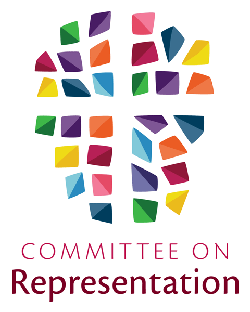Whose voices are most influential in shaping the decisions of committees at General Assemblies? Which committee members rarely speak? Do things like the arrangement of furniture in the room, or the use of Robert’s Rules of Order, affect committee participation?
Exploring these kinds of questions is the purpose of a new app that made its debut at the 222nd General Assembly (2016). Data collected by observers at the assembly using the new Process Observation Web Application is currently being analyzed, says Molly Casteel, manager of representation, inclusiveness, and ruling elder training in the Office of the General Assembly. She initiated design of the app with support from the General Assembly Committee on Representation (GACOR).
“We’re looking for patterns that will help improve the system and widen participation,” Casteel explains. Observers in General Assembly (GA) committees can use the app to document who is speaking and making motions—even noting such things as where the speakers are seated in relation to the committee leaders. The app uses GA registration lists to provide demographics such as age, race, and gender of the committee members.
“The point is not to catch people making bad decisions, but to equip leaders with more information about what is going on in the room,” Casteel says. By analyzing the data, “we learn how the ways we discern together include or exclude.”
“We want to open people up to new ways of thinking about being inclusive, so we can be a better church,” says GACOR Chair Martha Ross-Mockaitis, a minister from Chicago. “By looking at the data, we can begin to help committee leaders be more aware of who they are calling on to speak ... to include people who are hesitant.”
Data gathered by observers could also influence changes in the decision-making process. Observers at some church meetings have noted, for example, that when groups follow Robert’s Rules of Order, male teaching elders—those most experienced with that particular process—often dominate decision making. More women and ruling elders enter in when decisions are made by consensus or as a committee-of-the-whole.
This is the kind of data that interested Casteel when she proposed development of a process observation app. “No one had paid attention to and tried to systematically measure these things before,” she says.
GACOR members have been experimenting with ways to measure participation in assembly committees since the 220th General Assembly (2012), but until this year they relied on a few volunteers and a cumbersome system of paper forms and tally sheets.
“The app was a huge step forward,” says Ross-Mockaitis. “It’s much more user-friendly.”
“It’s a web application, so it shows up the same way on smart phones and tablets,” Casteel says. The app was designed by the same technicians who developed PC-Biz, the site for accessing business of the assembly, so registration lists and other vital data are already in the system.
Casteel says she first learned about using process observation to measure participation from Presbyterian Women (PW). For many years, PW has sent groups of volunteers to monitor the work of its committees.
The app is enabling GACOR to broaden its pool of observers, which leads to the collection of better data, Casteel says. “The data is better when the observers are as numerous and diverse as possible.”
Just before this year’s assembly began, Casteel sent an email to about 1,400 attendees inviting them to be committee observers. She estimates that several hundred people clicked to the app, and about 50 received training and completed the full observation process (including tally and questionnaire).
Ross-Mockaitis expects use of the app will have “a big trickle-down effect,” leading to similar process observation efforts at the synod and presbytery level. Casteel has already requested that the app be retooled for use at the October 30–31 Polity Conference of the Presbyterian Church (U.S.A.)—a first step toward creating an instrument that could be used by mid councils.
In a denomination whose leadership has tended to be older, white, and male, it is important “to open up the table,” Ross-Mockaitis says. The technology is “very promising,” she adds. “I hope it will have an even bigger presence at the next General Assembly.”

